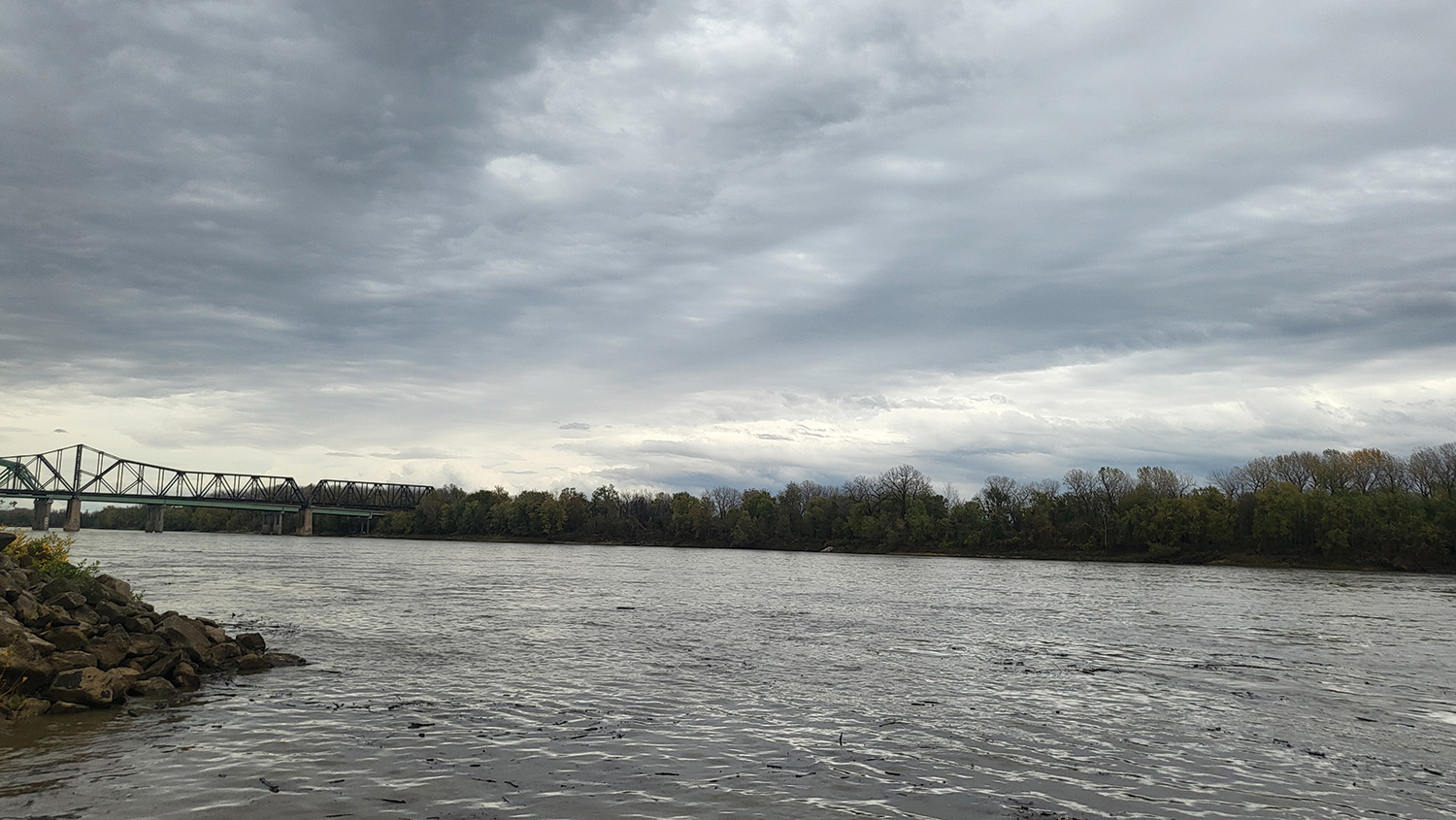Recent rainfall, with more in the forecast, may be just what the river system needs to break out of this year’s drought.
“We were told yesterday the worst of the 2024 low water may be behind us,” Randy Chamness said November 5.
Chamness is the chairman of the Lower Mississippi River Committee, which works closely with the Corps of Engineers and Coast Guard during periods of extreme low or high water on the Lower Mississippi.
“Some of the extended models are showing we may have more frequent rain events, which may give us some better operating conditions, at least through the end of November,” Chamness said.
October is typically the driest month in the Midwest, he said, indicating cautious optimism.
“We got through October, and so we hope we’re going to see patterns that are more seasonal, which we hope will bring us some benefit, hopefully through the end of the year,” he said.
One sign of progress was at a frequent problem area near Hickman, Ky., where navigational traffic was moved back from an alternate channel dredged near the right descending bank back to the main channel near the left descending bank. While tows in the surrounding two-mile area (Miles 919 to 921) had been limited to no more than five barges wide, moving back to the main channel will allow tows up to six barges wide.
That is on par with restrictions elsewhere on the Lower Mississippi, with tow sizes up to six wide from Cairo, Ill., to Greenville, Miss. (Mile 537) and up to seven wide from Greenville south to the Gulf of Mexico. Drafts were set at 10 feet from Cairo to Greenville and 10 feet, 6 inches from Greenville south.
Chamness said the river gage at Memphis dropped briefly to nearly -11 feet, “but even with that we held consistent with drafts and tow size because we knew water was coming. That gamble has paid off because we do have the water coming now. However, tolerance has gotten very tight through the critical areas.”
Additionally, he said, there had been groundings “limited in scope” reported throughout the Memphis and Vicksburg engineer districts at various times.
“This is really the first time that we’ve been able to stay on six wide and a 10-foot draft once the river got to -10 in Memphis, and I think that’s a direct result of the dredging and the scouring effect of the river,” Chamness said, praising all those who have come together to maintain water flows and address problem areas. “For those stages, we actually had a pretty favorable river to operate on for those tow sizes and drafts.”
With water levels expected to rise for at least the next few weeks, the dredge Hurley was being sent for much-needed repairs, Chamness said. Meanwhile, the dredge Jadwin was working at Lower Mississippi Mile 437 (known as Delta Point) and expected to remain there at least into November 11.
Upper Mississippi
On the Upper Mississippi, River Industry Action Committee Chairman Bernie Heroff was also enthused about the rainy weather.
“Low water has taken a vacation,” he quipped. “We have very good water conditions for at least the next month or so, it looks like.”
Some areas around St. Louis received 3 to 4 inches of rain recently, he said, adding, “And it sounds like there might be a few more rounds of precipitation coming for the next couple of weeks.”
He cautioned that above Rock Island, Ill., the river remained fairly low as of November 5. The river has risen by 9 inches in the past week, with another 1 foot predicted in the next week.
“It’s not a huge amount,” he said.
Additionally, Heroff noted that reductions in flow to the Missouri River will begin November 22, with St. Louis typically seeing those effects beginning about December 1 and with full effect typically around December 12 to 15. Because of the reduction in flow and the possibility of icing as the weather cools, Heroff said late December and January are possibly the riskiest times for the St. Louis reach of the Mississippi.




